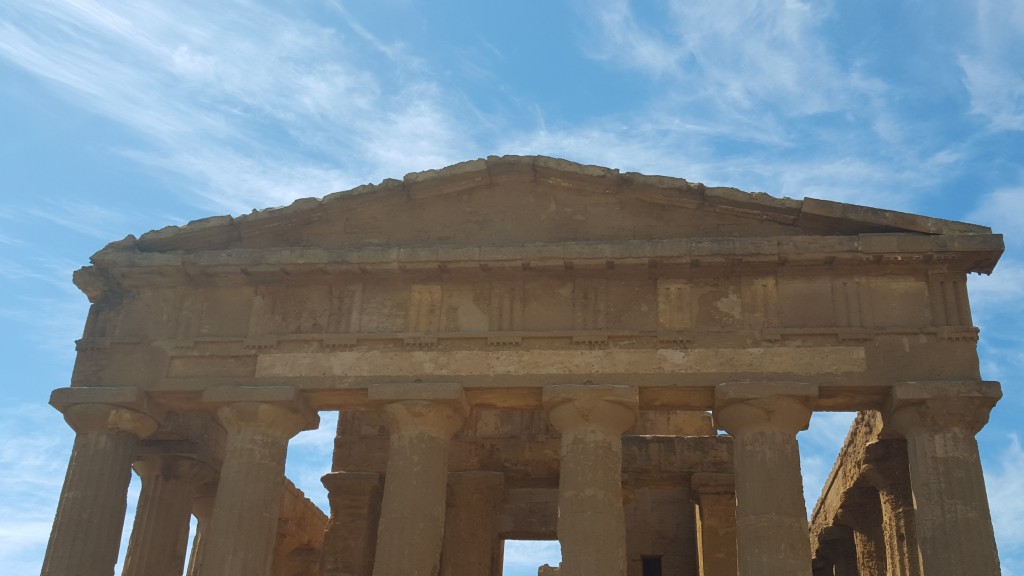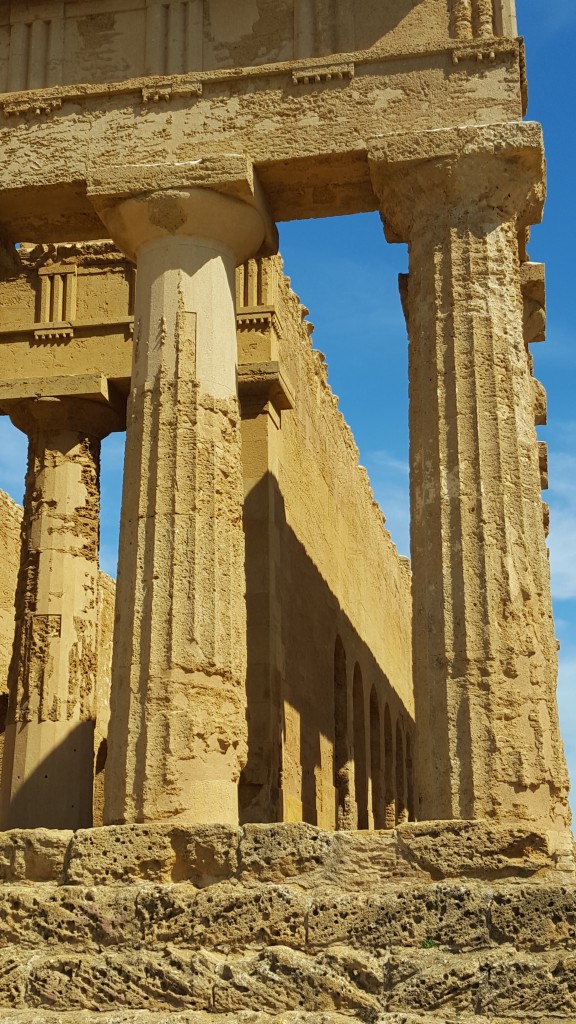
The Temple of Concord located in the Valle dei Templi of Agrigento is one of the most well-preserved examples of a Greek temple that remains in the modern world. This Doric temple exemplifies the most important goal of Classical architects: to create the most harmonious and balanced structure. The arrangement of metopes, the slight column entasis, and the inclination of the columns were all used to further the illusion of a perfectly straight building. The roof (or the pediment) of this temple is in particularly outstanding condition. This incredible preservation is due to the fact that this temple was converted into a Christian church; the remnants of the walls and arches of the nave can still be seen standing within the temple. Although we had seen several examples where temples had been deconstructed by later builders, since those monuments were an excellent source of pre-cut and moveable rock, the Temple of Concord also demonstrates that sometimes religious spaces and holy sites were conveniently re-purposed.
The layout of an Ancient Greek and Roman temple was not designed for interior seating; the design of a Christian church was actually based upon the layout for a basilica, which accommodated the congregation of large groups of people inside a building. In fact, most Ancient Greek and Roman worshipers remained outside the temple and performed their sacrifices on an altar separate from the main building. The temples served as “houses” for the honored deity; worshipers could gain a glimpse of the cult statue located in in the interior of the temple (the cella) through the columns but were not allowed to enter the sanctuary of the god. Thus, in order to fit the needs of the Christian faith, the later builders converted the temple into a church by essentially using the cella and the interior colonnade to build the structure of a typical nave; these engineers decided interestingly enough to preserve the exterior columns and the pediment of the temple, creating a structure that is an unusual mixture of two drastically different religions.
